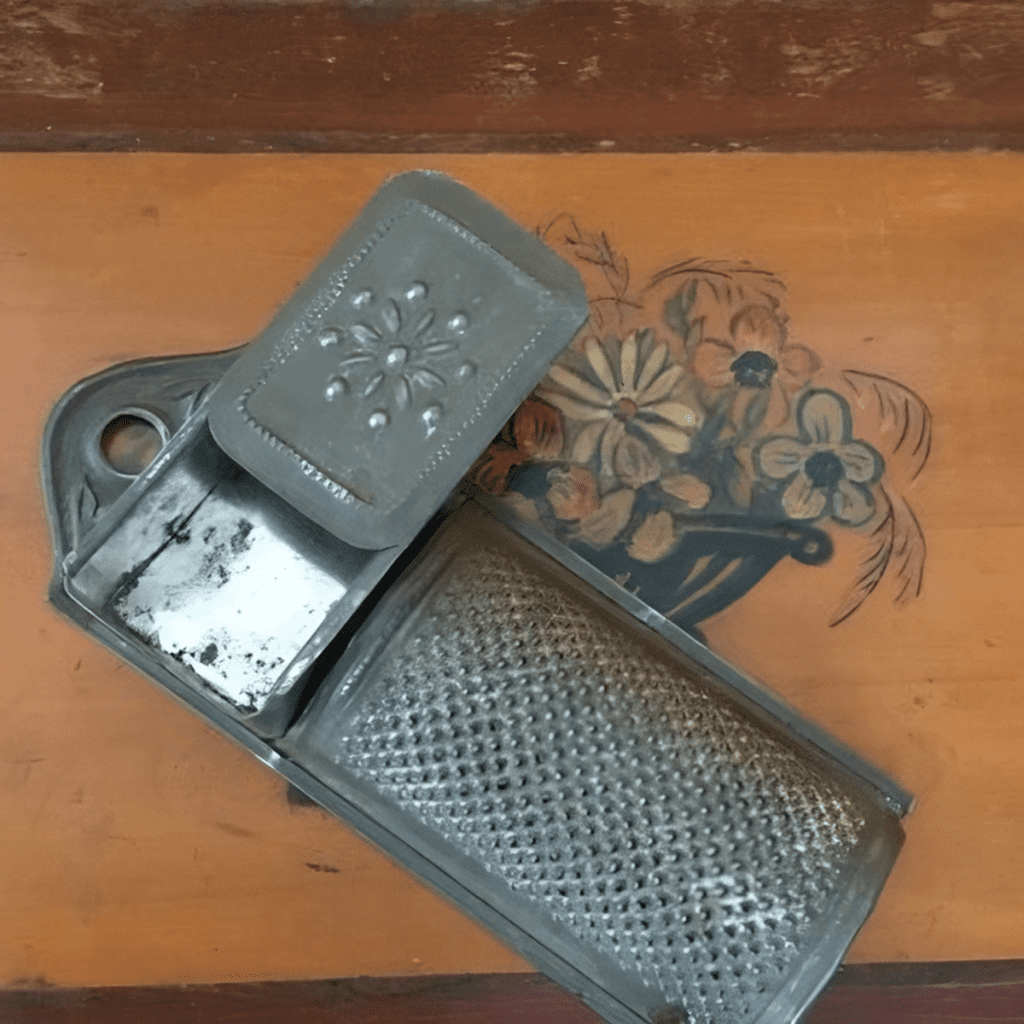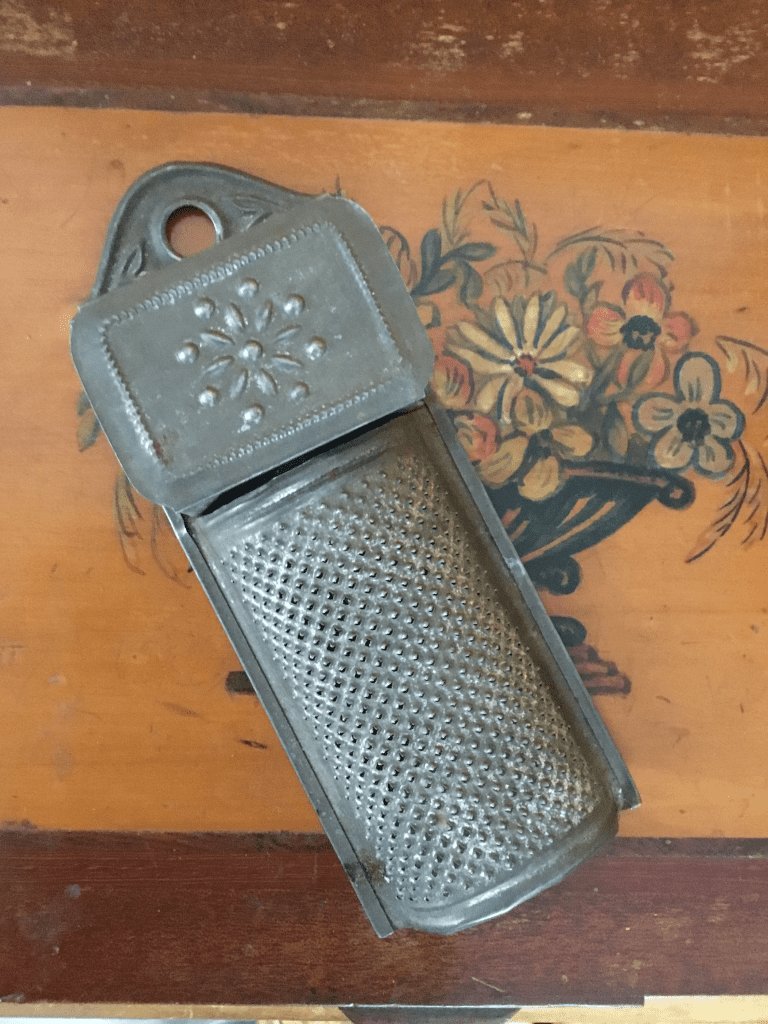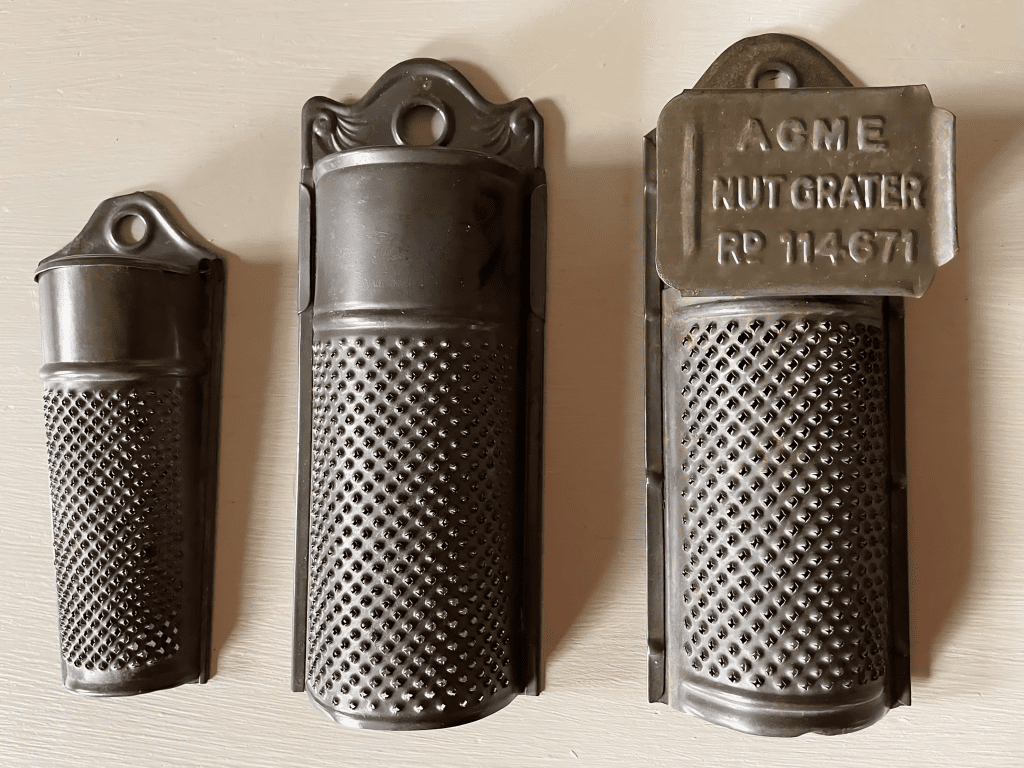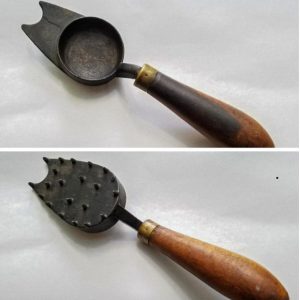Ever found an object in an old box that stopped you in your tracks? Small, curved, metal—almost decorative, yet oddly practical. No wires, no buttons. Just raw, intentional craftsmanship. That’s exactly what happens when you stumble upon an antique nutmeg grater. It might not look like much at first, but this humble tool once played a starring role in kitchens around the world.
Let’s crack open its story—and you might just see why this tiny item deserves a spot in culinary history.

From the Spice Islands to Your Table: Nutmeg’s Journey Begins
Before we get to the tool, let’s talk about the spice.
Nutmeg hails from the Banda Islands in Indonesia—also known as the original Spice Islands. During the 15th and 16th centuries, nutmeg was so valuable that wars were fought over it. European powers scrambled to control the trade routes, turning this small seed into a global obsession.
Nutmeg wasn’t just a flavor enhancer. It was prized for its fragrance, believed to have healing properties, and even used to preserve food. And because whole nutmeg was bought as a solid seed, people needed a way to turn it into powder.
Enter: the nutmeg grater.
Video: Nutmeg grater TESCOMA PRESIDENT X-sharp
A Touch of Elegance in a Practical Tool
Unlike the giant box graters we use today, the antique nutmeg grater was compact and beautifully made. Crafted from tin, silver, ivory, or wood, these tiny tools often featured intricate etching, curved surfaces, and hidden compartments for storing whole nutmeg seeds.
Some even doubled as conversation pieces, small enough to fit in a gentleman’s pocket or a lady’s handbag. They weren’t just kitchen tools—they were status symbols.
You weren’t just grating a spice. You were engaging in a ritual—one that brought sophistication to even the simplest cup of eggnog or holiday pie.
How It Worked: Simple, Smart, and Still Effective
Here’s how it worked: You’d place a whole nutmeg seed against the grating surface—typically a curved sheet with tiny sharp holes—and rub it with just enough pressure to produce delicate shavings.
No batteries, no motors—just pure mechanics and human touch.
The grated nutmeg could be sprinkled into sauces, mulled wine, desserts, or teas. And because it was grated fresh, the flavor was miles ahead of anything pre-ground.
In many ways, the nutmeg grater was an early lesson in “slow food” before the term ever existed.
The Post-War Boom and Kitchen Innovation

After World War II, home kitchens evolved fast. Appliances like toasters, blenders, and electric mixers flooded the market. But in the midst of all that change, the nutmeg grater held its own.
In the ‘50s and ‘60s, families leaned heavily into baking traditions. From custards to cookies, nutmeg became a signature spice. The grater remained a trusted companion, offering a hands-on connection to recipes passed down through generations.
It was also a symbol of quality. You didn’t just dump spice from a jar—you prepared it, respecting its potency and purpose.
A Lost Treasure Among Antiques and Tools
Fast forward to today, and these vintage nutmeg graters often turn up in the most unexpected places: old toolboxes, estate sales, dusty drawers in grandma’s kitchen.
Video: The Edgar Nutmeg Grater
Why? Because people held onto them. They weren’t just useful—they were personal.
The wear and tear on each grater tells a story. The patina, the faded edges, the dulling metal—it’s evidence of use, of meals prepared with care. Of warm kitchens and family traditions.
So when you find one, don’t dismiss it. That odd-looking piece of metal might’ve helped flavor a generation’s holiday dinners.
Why They Still Matter Today
You might be thinking: “That’s neat, but who grates nutmeg anymore?”
Surprisingly, many cooks still do. In high-end kitchens, fresh-grated nutmeg is considered a chef’s trick. It brings out deeper flavor in both sweet and savory dishes. And with more people returning to slow, intentional cooking, vintage kitchen tools are making a quiet comeback.
Plus, antique nutmeg graters are now coveted collectibles. Some are displayed in glass cabinets, others passed down like heirlooms.
Even if you don’t use it, just owning one connects you to a global story of trade, taste, and tradition.
Conclusion: A Small Tool With a Big Story

That little object buried in a box of forgotten tools? It’s not junk. It’s a piece of history—an antique nutmeg grater that once brought fragrance, flavor, and a touch of elegance to kitchens around the world.
It tells the story of a spice that sailed across oceans, of artisans who crafted beauty into everyday tools, and of families who understood that even the smallest ingredients could leave the biggest impressions.
So next time you stumble upon one, hold onto it. Because sometimes, the most meaningful treasures come in the most unassuming shapes—waiting for someone curious enough to ask, “What on earth is this?” and wise enough to uncover the answer.


